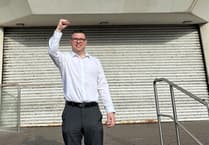We take a look back at some of the traditional Christmas celebrations and events in north and west Wales that are unique to the area.
Considering the importance of Christmastide in Wales through the ages, small wonder that many customs have grown up around it.
Although most of these died out with the emergence of industrialisation toward the end of the 19th century, some, such as the plygain carol service, still remain in certain areas.
Other common activities over the festive period included enactments of the Mari Lwyd horse ritual by men and boys, and wassailing and hunting the wren ceremonies wishing good luck and prosperity for the coming months.
On New Year’s Day children would go from house to house to collect calennig or New Year’s gifts.
Plygain
In many parts of Wales, Christmas meant rising early (or staying up overnight) to attend the plygain service at the parish church.
The hour for the plygain appears to have varied between 3am and 6am, the latter becoming more common as time went on. To await the service, young people, in particular, would pass away the time in one way or another.
In some country districts they would gather at certain farmhouses to make cyflaith (treacle toffee) and spend the night merrily, decorating the houses with holly and mistletoe, as at Marford, Flintshire, in the 1830s.
According to Mrs Thrale’s journal of a tour in 1774 the inhabitants of Dyffryn Clwyd kindled their lights at two in the morning and sang and danced to the harp until the plygain.
In other districts, especially country towns, the time was spent playing in the streets. In Tenby, Pembrokeshire, for example, crowds carried torches, shouted verses and blew cow-horns, before finally forming a torch procession in which the young men of the town escorted the rector from his house to the church.
A similar procession is recorded in Laugharne, Carmarthenshire, and also in Llanfyllin, Montgomeryshire, where candles were used instead of torches.
Plygain candles
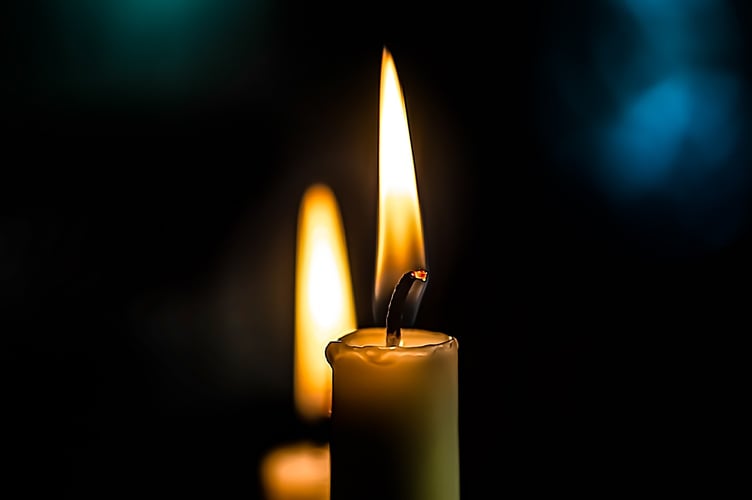
In the countryside, the plygain at the parish church was attended by people from even the remotest farmsteads.
Often each person brought his or her candle to help to light the church since, until the nineteenth century, regular services were rarely held at night-time and no provision for lighting was usually made. The brilliant illumination from the candles of the attenders was an important feature of the festival.
In Llanfyllin, special candles known as canhwyllau plygain were made by local chandlers in the middle of the nineteenth century.
During the service the church was decorated inside with chandeliers holding coloured candles and, in Dolgellau, for example, decked with holly.
In Maentwrog, Meirionnydd, candles were also fixed in sockets on the tops of standards or posts fastened to pews here and there in the building.
While no doubt the custom varied in detail from parish to parish, the brilliant illumination of the church appears to have made a lasting impression on the memories of those who have left us descriptions, and to have been a striking characteristic of the traditional plygain.
As Gwynfryn Richards has suggested, the spiritual significance of candle-lighting at Christmas as a symbol of the coming of the Light of the World, may be discerned in these practices.
The plygain itself was an abbreviated form of morning service interspersed with and followed by carols sung by soloists and parties.
William Payne described the plygain in Dolgellau as he knew it in the middle of the last century in the following words: "Now the church is in a blaze, now crammed, body, aisles, gallery, now Shon Robert, the club-footed shoemaker, and his wife, descending from the singing seat to the lower and front part of the gallery, strike up alternately, and without artificial aid of pitch pipe, the long, long carol and old favourite describing the Worship of Kings and of the Wise Men, and the Flight into Egypt, and the terrible wickedness of Herod.
"The crowds are wholly silent and rapt in admiration. Then the good Rector, and his curate, David Pugh, stand up, and read the Morning Service abbreviated, finishing with the prayer for All Conditions of Men, and the benediction restless and somewhat surging is the congregation during prayers the Rector obliged sometimes to stop short in his office and look direct at some part or persons, but no verbal admonishment.
"Prayers over, the singers begin again more carols, new singers, old carols in solos, duets, trios, choruses, then silence in the audience, broken at appropriate pauses by the suppressed hum, of delight and approval, till between eight and nine, hunger telling on the singers, the Plygain is over and the Bells strike out a round peal."
In Maentwrog a sermon was included in the plygain service, but the rector was careful to keep both sermon and service short, as he evidently felt that the chief attraction was not the service but the carolling that followed it. In other places, such as Llanfair Dyffryn Clwyd, holy communion was administered during the plygain.
For the stranger, attending a plygain service is an unusual experience. For almost two hours, the service is completely in the hands of the carol singers.
No programme has been prepared beforehand and no-one acts as announcer, but, each in turn, the carol parties walk forward quietly and leisurely forward to sing.
On average there will be eight to 14 parties present and one is likely to hear between 20 and 30 Christmas carols during the service - all in Welsh and all different, since it is a point of honour not to offer a carol already heard that evening.
Mari Lwyd
Mari Lwyd (Grey Mare/Holy Mary) was the name most generally applied in Wales to the horse-figure formerly carried from door to door by wassail-singing groups during the Christmas season.
This figure (which is, of course, represented in other countries) seems to have been once known all over southern Wales but during the present century relatively little has been seen of.
It is still celebrated every year in areas surrounding Dinas Mawddwy and in Glamorgan.
The attendant ritual began with the singing of traditional stanzas by the Mari Lwyd group at the door, soliciting both permission to sing and entry into the house, and issuing a challenge to a versifying contest.
Next followed the pwnco, the debate conducted to the same music in a combination of traditional and impromptu stanzas between a member of the group and an opponent within the house. This usually amounted to heavy leg-pulling in which the contestants mocked each other’s singing, drunkenness, etc.
Victory in the debate would ensure admission into the house for the Mari Lwyd group, to partake of cakes and ale and perhaps collect a money gift as well.
In at least some cases, after the end of the debate, the group would sing additional stanzas introducing its individual members and finally, after entertaining the occupants of the house, it would deliver a farewell song.
Noson Gyflaith
Noson Gyflaith (Toffee Evening) was a traditional part of Christmas or New Year festivities in some areas of north Wales earlier this century.
Families, in their turn, would invite friends to their homes for supper, usually in the form of a Christmas dinner, and it would be followed by merriment, playing games, making toffee, and storytelling.
When the required ingredients had boiled to a certain degree, the toffee was poured onto a well-greased slate or stone slab.
The hearth-stone itself was used for this purpose in some houses. Members of the happy gathering would then cover their hands with butter and attempt to ’pull’ the toffee while it was quite warm. It was a skilled art to ’pull’ and twist the toffee until it became golden yellow in colour. Both the skilled and unskilled would take part-the one being a source of envy, the other a source of banter.
Toffee-making was also practised in parts of south Wales, especially in the coal-mining areas.
As far as we know, it was not associated here with a particular festive occasion, but housewives were known to sell it from their homes or on local market stalls.
It was known by various names such as taffi, dant, or ’fanny’, or indeed it could be known by the name of the person who made it, e.g. losin Magws, or losin Ansin bach. Children would buy it - a six inch strip or two ounces for a penny.
Calennig
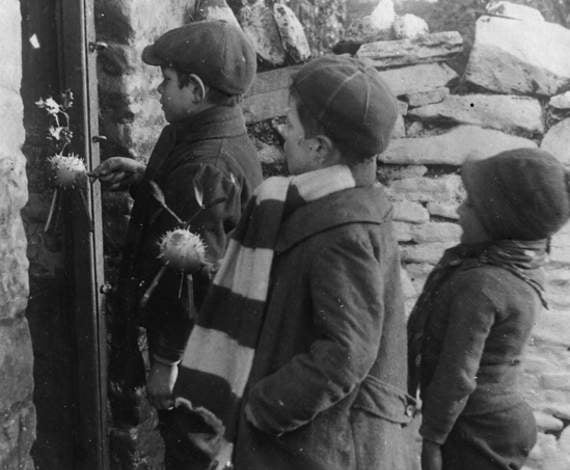
The giving of gifts on New Year’s Day is an ancient custom.
In Wales it took the form of collecting calennig (New Year’s Gift).
Children would form groups and go from house to house, bearing good wishes for the health and prosperity of the family during the year to come.
This was symbolised by the skewered apples, stuck with corn and sprigs of evergreen, which they carried in their hands. Verses were sung at the door of the house, and they would receive small gifts of food or money for their troubles.
Latterly, the carrying of the apple has been discontinued, and only the recitation of a few verses and the collecting of new pennies mark the custom in those districts where it has survived.
Here is a verse sung in Cardiganshire and Pembrokeshire:
Mi godais heddiw ma’s o’m t?
A’m cwd a’m pastwn gyda mi,
A dyma’m neges ar eich traws,
Sef llanw’m cwd â bara a chaws.
---
I left my house today
With my bag and my stick,
And here is my message to you,
Fill my bag with bread and cheese.
Do you still carry out any of these old Welsh traditions? Or have you created your own new ones? Let us know - email [email protected]
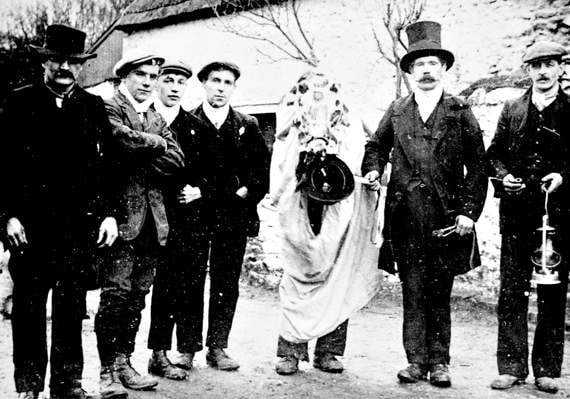
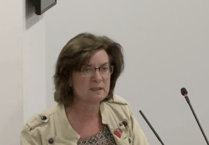
.png?width=209&height=140&crop=209:145,smart&quality=75)
